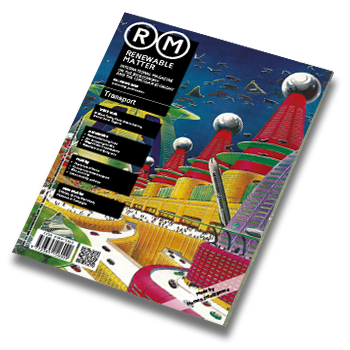“We will have a unique global footprint, three continents and six countries welcoming and uniting the world while celebrating together the beautiful game.” These are the words spoken by FIFA President Gianni Infantino to announce the countries that will host the 2030 Football World Cup. This atypical tournament will be hosted primarily by the trio of Spain, Morocco, and Portugal, but will also involve three inaugural matches in South America to celebrate the World Cup’s centenary.
The global footprint mentioned by Infantino immediately reminded many environmentalist movements and some sustainable events experts of the carbon footprint of last year’s World Cup in Qatar, which led to furious protests, especially in the wake of the announcement that the event would have a net zero climate impact.
The reasons for a six-country World Cup
Starting with the next World Cup, which will take place between the United States, Canada, and Mexico in 2026, the number of teams taking part will rise from 32 to 48, also increasing the number of matches being played (over 100). This expansion has also been confirmed for the 2030 World Cup, with three inaugural matches to be held in Uruguay, Paraguay, and Argentina ten days prior to the start of the event proper in Marocco, Portugal, and Spain. During this time, the players who took part in the initial matches will have time to travel, rest, and adapt to the change of season.
“It is a unique situation in which FIFA wanted to celebrate the 100 years of World Cup history and recognise the three South American countries,” a FIFA spokesperson told Renewable Matter. “The countries are geographically very close and will host three matches in which Argentinian, Uruguayan, and Paraguayan fans will be able to watch their team without having to travel.”
Obviously, the six teams playing the inaugural matches will have to cross the Atlantic, where they will reach the remaining 42 teams. “All 104 matches will be played in existing stadiums, which will allow us to save emissions by not having to build new facilities from the ground up,” our source noted.
This is a useful clarification, considering that for the last World Cup in Qatar FIFA ordered eight brand new stadiums to be built, which contributed to a large part of the 3.6 million tonnes of carbon dioxide generated for the tournament.
Criticism from environmentalists
The announcement was followed by critiques from several environmentalist groups linked with the world of sport. LeFrank Huisingh, founder of Fossil Free Football – a group that aims to eliminate the use of fossil fuels in football – called the decision “outrageous but not surprising”. Sport ecologist Madeleine Orr from the University of Toronto said that the decision clashes with FIFA’s plans to reduce carbon emissions by 50% by 2030.
“The big problem is that they're continuously growing the event. Every decision that grows the World Cup is going to increase the carbon footprint of the event,” said Orr, whose research examines the impacts of climate change on the sport sector. The issue raised here echoes a wider debate around the concept of “Green Growth”, widely criticised by green economists, but which is often cited as the only solution to make the industry – events, in this case – financially sustainable.
In 2022 alone, FIFA reported 5.7 billion dollars in profits, money that should be used in part for carbon offsetting projects (3.6 million credits to offset Qatar 2022). But, given the numbers, the fact that the federation has decided to increase the number of matches and divide the hosting costs between different countries solely as a cost-saving measure seems rather implausible. As is often the case, politics and profits are prioritised over environmental concerns.
The event’s carbon footprint will increase, although…
A sustainability plan for the 2030 World Cup will only be published in 2028. We will get a taste of how FIFA will approach an event spread across multiple countries in a few months, with the publication of the Sustainability Plan for the 2026 World Cup in North America and Mexico.
“Organising a World Cup across different countries involves more people, staff, and goods moving around, which inevitably results in a higher carbon footprint,” Pierluigi Zacheo – a member of Sport and Sustainability International and expert in the sustainability of sporting events – tells Renewable Matter. “However, by 2030, there could be technologies and solutions such as sustainable aviation fuel (a liquid fuel currently used in commercial aviation which reduces CO2 emissions by up to 80%, ed.) that, in the long term, could reduce the environmental impact of transport by air and ship.”
For Euro 2016 in France, UEFA released an app called ‘Fanzone’ that informed users about the most sustainable transport options and, at the end of the event, allowed fans to calculate their carbon footprint.
The question mark of waste management
In addition to the difficulties of replicating this modus operandi in a three-country event due to critical issues around data protection and privacy, what worries Zacheo are also the complexities of complying with each country’s waste management regulations.
“Waste management flows in Paraguay may be different to those in Portugal and Morocco. It will be very difficult for FIFA to manage them according to the host country and achieve good performance in terms of recycling,” Zacheo explains.
World Cup organisers in Qatar revealed that over 2,000 tonnes of waste were recycled or composted, achieving an 80% recycling target. We do not yet know what specific guidelines and criteria will be adopted for upcoming FIFA tournaments. Exporting good practices to different locations that are preparing to host similar events could be a great opportunity, but doing this successfully in 6 countries across 3 continents will by no means be an easy feat.
This article is also available in Italian / Questo articolo è disponibile anche in italiano
Image: YourLifeStyleBusiness, Unsplash



